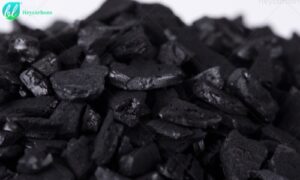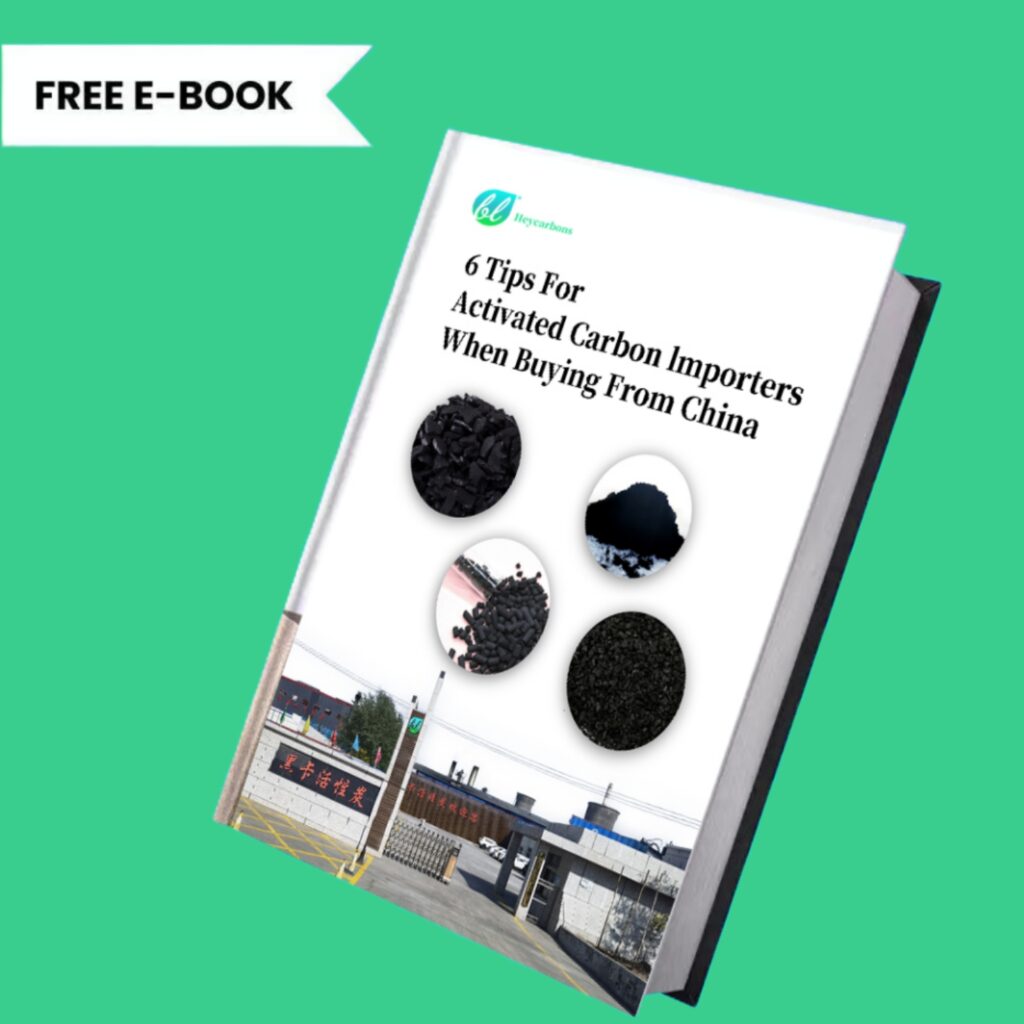Avtivated Carbon Exporting to Peru Customer Case
Destination country and Port: Callao port, Peru, to Peru
Quantity: From 2019 to 2024, 105.5t, 7 orders
Customer requirements: 200 mesh , methylene blue 210mg/g, pH adjustment wood base powdered activated carbon PAC
Of course, there are also customers in other regions who use coal-based briquette granular activated carbon for glycerin decolorization.
Wood Powdered Activated Carbon For Glycerol Decolorization Product Introduction
Next, we will introduce Wood powdered activated carbon functions for glycerol decolorization, How to use wood powdereded activated carbon pac, How much wood powder activated carbon is used, Effect of temperature and Application of wood powdered activated carbon in other vegetable oils.
Wood powdered activated carbon treatment for glycerol decolorization mainly plays the following roles:
1.Adsorption:
Wood activated charcoal powder has a highly developed pore structure and a huge specific surface area, which can effectively adsorb pigment molecules, impurities and other organic matter in glycerol.
This physical adsorption ability enables activated carbon to remove a large amount of pigments and impurities from the liquid, thereby achieving the purpose of decolorization using activated charcoal.
2.Catalytic effect:
The active groups on the surface of wood powdered activated carbon can play a catalytic role in the decolorization process, accelerate the decomposition of certain organic pigment molecules, and further improve the decolorization effect.
3.Deodorization:
In addition to decolorization, wood powdered activated carbon can also adsorb odor molecules in glycerol, thereby improving the odor quality of glycerol.
4.Impurity removal:
During the decolorization process, wood powdered activated carbon can also effectively remove impurities in glycerol, such as trace metal ions and other non-pigment organic matter, which also has a significant effect on improving the purity and quality of glycerol.
In general, the main role of wood powdered activated carbon in glycerin decolorization is to remove pigments, impurities and odors in glycerin through its strong adsorption capacity and partial catalytic capacity, thereby improving the purity and quality of glycerin.
Contact Heycarbons to learn more information about decolorization using activated charcoal:
How to use wood powdereded activated carbon pac in glycerin decolorization?
The use and dosage of wood powder activated carbon in glycerol decolorization depends on the specific operating conditions and the initial color concentration of glycerol. The following is a general use and dosage reference:
1.Pretreatment:
Make sure that the glycerol solution has been preliminarily filtered to remove larger particles and suspended matter.
2.Adding activated carbon:
Weigh an appropriate amount of wood powder activated carbon according to the amount of glycerol and the required decolorization degree.
3.Mixing and stirring:
1) Slowly add wood powder activated carbon to the glycerol solution.
2) Stir well to ensure that the activated carbon is evenly distributed in the glycerol solution. The stirring time is generally 30 minutes to 1 hour, depending on the specific situation.
4. Standing and filtering:
1.)After stirring, stand for a period of time (usually 1 to 2 hours) to allow the adsorption effect to fully play a role.
2)Use appropriate filtering equipment (such as vacuum filtration or pressure filtration) to separate the activated carbon from the glycerol solution. The filtered glycerol should be transparent or nearly colorless.
5. Post-processing:
After filtration, glycerol may need further processing, such as re-filtration or refining, to ensure the purity and quality of the final product.
How much wood powder activated carbon is used in the glycerin decolorization process?
The amount of wood powder activated carbon used usually depends on the initial color concentration of glycerol and the desired decolorization effect. In general, the dosage range can refer to the following standards:
- Low concentration pigment glycerol: 0.5% to 1% activated carbon (relative to the weight of glycerol).
- Medium concentration pigment glycerol: 1% to 3% activated carbon (relative to the weight of glycerol).
- High concentration pigment glycerol: 3% to 5% activated carbon (relative to the weight of glycerol).
It should be noted that the actual dosage should be determined through small-scale trials in order to find the best decolorization effect and economy. Different batches of wood powder activated carbon and the specific properties of glycerol (such as impurity content, color concentration, etc.) may affect the optimal dosage, so experimental adjustments are necessary.
Effect of temperature on wood powder activated carbon in glycerol decolorization process
Wood powder activated carbon In the process of glycerol decolorization, temperature is a key factor that can affect the adsorption effect and decolorization efficiency.
Generally speaking, the operating temperature range is usually between 50℃ and 80℃. The specific temperature selection can be adjusted according to the following points:
1.Adsorption effect:
1)Higher temperatures (such as 70℃ to 80℃) can increase the fluidity of glycerol, which helps the activated carbon to better disperse and adsorb pigment molecules.
2)Excessive temperature may cause some heat-sensitive impurities to decompose or react, so excessive temperature should be avoided.
2.Solubility:
1)Higher temperature helps dissolve impurities in glycerol and is conducive to the adsorption of activated carbon.
2)However, excessive temperature may increase equipment energy consumption and is not economical.
3.Equipment and process requirements:
Temperature selection also needs to consider the tolerance range and process requirements of existing equipment to ensure operation under the premise of safety and economy.
4.Recommended operating temperature
Under normal circumstances, the recommended operating temperature is:
- 50℃ to 60℃: Suitable for temperature-sensitive glycerol solutions, which can effectively decolorize while avoiding impurity decomposition.
- 60℃ to 70℃: Suitable for general decolorization needs, which can balance decolorization effect and energy consumption.
- 70℃ to 80℃: Suitable for situations where high-efficiency decolorization is required, but attention should be paid to monitoring the thermal stability of glycerol and impurities.
5.Temperature control in operation steps
1)Preheating glycerol:
Before adding wood powder activated carbon, heat the glycerol solution to the required temperature (such as 60℃).
2)Maintain constant temperature:
3)During stirring and standing, keep the temperature of the glycerol solution within the target range to ensure the best decolorization effect.
4)Temperature adjustment:
Through experimental data feedback, adjust the temperature appropriately to optimize the decolorization effect and operating economy.
Reasonable temperature control can effectively improve the efficiency and effect of wood powder activated carbon in the glycerol decolorization process.
Contact Heycarbons to learn more information about decolorization using activated charcoal:
Application of wood powdered activated carbon in other vegetable oils:
The main component of oil is fatty acid glyceride, which also contains a small amount of free fatty acids and other impurities. The type and quantity of impurities are affected by the raw materials of oil, so the refining methods of oil are different.
Impurities are the products of metabolism of animals and plants in the life process, which are of great significance to their life activities, especially antioxidant impurities, which can prevent oil from oxidation and rancidity. Oil refining removes harmful components and retains beneficial components.
Usually, the refining method has three steps, namely neutralization, decolorization and deodorization. Neutralization generally uses sodium hydroxide to remove free fatty acids, and also has the function of removing proteins and colloids, and reducing the color. To make the oil light in color, further treatment is required. The treatment method can be through the action of chemical agents, but the common use is to use adsorbents.
Activated clay and activated carbon are indispensable adsorbents in the oil industry. White clay mainly plays a decolorizing role, while activated carbon mainly deodorizes, removes odors and decolorizes.
The selection of activated carbon type is also very important. Activated carbon products made by different activation methods have different performances and are suitable for decolorization of different oil products. It is better to test them before use.
The pH value of activated carbon is crucial. Too much alkalinity or acidity can cause adverse changes in oil products. Heycarbons will recommend the appropriate pH according to the customer’s oil situation.
1. Coconut oil
The variegated color and impurities of coconut oil can be well refined by using activated carbon without mixing with other materials. For general coconut oil, the addition of activated carbon is less than 1% to obtain a good refining effect;
But for crude oil of poor quality, the addition of activated carbon needs to be increased. The selection of activated carbon type is crucial. Different activated carbon varieties have a significant effect on the effect of decolorization and impurity removal.
2. Cottonseed oil
Cottonseed oil has a complex composition, containing gossypol, various sugars, resins, lutein, chlorophyll, etc., so white clay and activated carbon need to be used in combination to achieve satisfactory treatment results. The ratio of activated carbon to clay is generally 1:(4~5), depending on the quality of the oil. Clay can remove yellow pigments, and activated carbon removes red and green, and the two have complementary advantages.
Activated carbon can also eliminate the earthy smell caused by the use of clay, and can also remove very trace substances such as saponins, phospholipids, colloids, etc. In the process of cottonseed oil treatment, it is not advisable to use acidic clay because it is easy to decompose oils and has the effect of promoting oxidation.
3. Peanut oil
General peanut oil is of relatively good quality, and only activated carbon decolorization is required to achieve the effect. If it is dark peanut oil, clay and activated carbon need to be used together to achieve good results.
4. Soybean oil
Soybean oil can be used for both food and paint. When used for food, in addition to using an adsorbent with a high ratio of activated carbon to clay, the other methods are similar to those for cottonseed oil treatment, especially when the oil is very dark green. Activated carbon can remove substances that can produce bad odors in finished oil.
5. Olive oil
Due to the different pressing and extraction processes, the quality of olive oil is also different. High-quality olive oil, especially the olive oil obtained from the first pressing, does not need to be bleached. Low-quality olive oil can be treated with a mixture of white clay and activated carbon.
Olive oil obtained by carbon disulfide extraction often has a dark green color, which can be improved by treating with a mixture of white clay and activated carbon adsorbent to make it a golden product.
6. Corn oil
Corn oil can be treated with a mixture of white clay and activated carbon, but the proportion of activated carbon needs to be less than that of other oils. Some people believe that it should be treated under partial vacuum and at a temperature of 80℃ or lower.
Related Products:
The main affecting factors of wood powdered activated charcoal cost are the price of sawdust, the price of phosphoric acid, the production efficiency of the factory and cost control.
If you want to learn more about the activated charcoal price, please contact with us:




